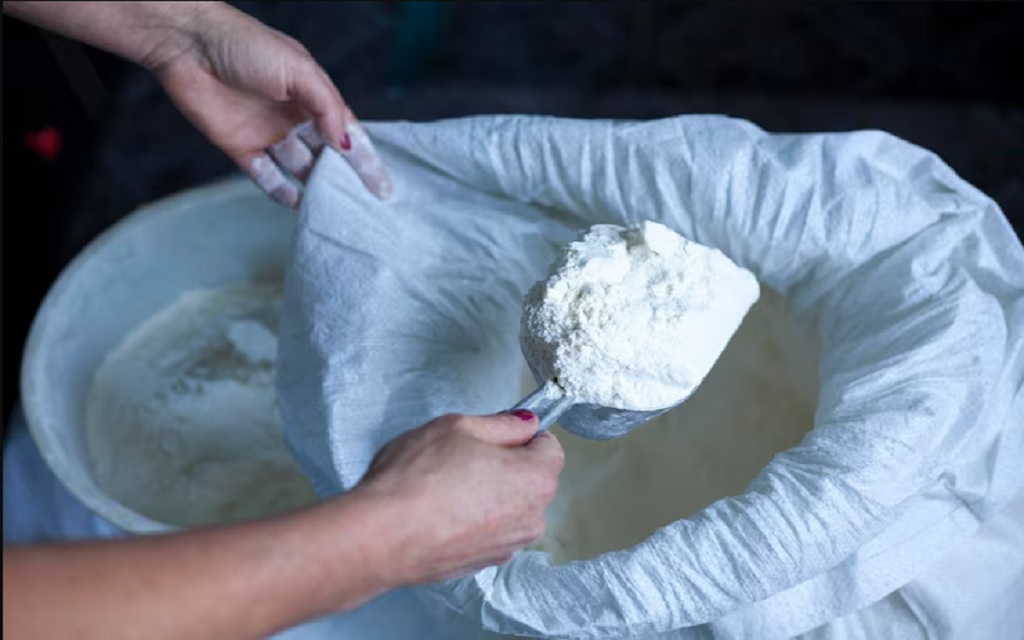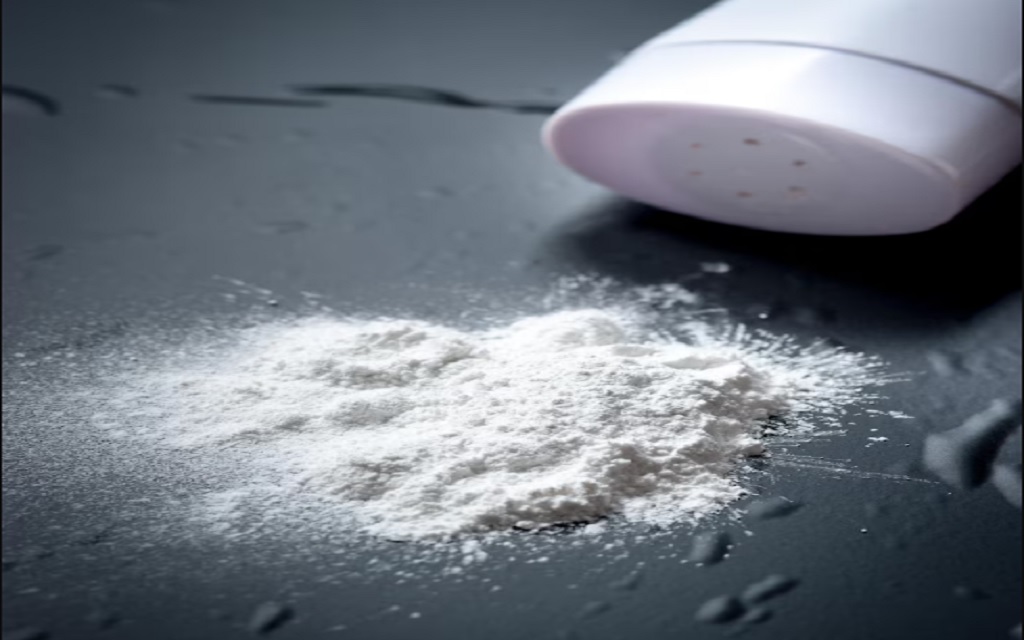In the past, talcum powder was a reliable household product. Adults use it every day, and parents use it on infants. However, under the fresh aroma and silky texture comes a more sinister tale that has shaken international courts and sparked debates about corporate responsibility. Thousands of women have sued for talc powder ovarian cancer lawsuit after using talc powder in recent years.
The company most closely linked to talcum powder, Johnson & Johnson, is at the centre of these lawsuits. The cases have led to historic rulings, increased knowledge of product safety, and worldwide concern. Everything you need to know about the talc powder ovarian cancer lawsuit is broken down in this article, including facts, science, lawsuits, and rights.
What Is Talcum Powder and Why Is It Controversial?

Talc is a naturally occurring mineral beneficial in personal care products because it absorbs moisture and lowers friction. For many years, talcum powder, which is manufactured from finely crushed talc, has been promoted as a basic, safe hygiene product.
But when scientists discovered asbestos residues in talc, worries were raised. Asbestos is known to cause cancer. Whistleblower materials and several laboratory tests contradict the safety claims made by firms.
In several instances, women claim that ovarian cancer was brought on by prolonged usage of talcum powder in the vaginal region. The legal dispute is whether the producers knew this risk and neglected to alert customers.
The Link Between Talc and Ovarian Cancer: What the Science Says
Although the evidence is debated, several studies suggest a possible connection between talc and cancer.
- Women who used talcum powder in their vaginal area had a 33% higher risk of ovarian cancer, according to a 2016 research published in Epidemiology.
- Similar results were also published in the International Journal of Gynaecological Cancer.
- The FDA discovered asbestos in nine of fifty-two talc cosmetic items in 2020.
Regulatory bodies’ positions differ despite these results. Talc usage in the vaginal area is categorised as “possibly carcinogenic” by the International Agency for Research on Cancer (IARC). The FDA in the United States hasn’t declared a complete prohibition, though.
Still, courts worldwide have considered the link strong enough to award billions in damages.
The $2 Billion Missouri Verdict: A Legal Turning Point
In 2018, a Missouri jury gave 22 women who claimed that Johnson & Johnson’s talcum powder caused their ovarian cancer $4.69 billion (later lowered to $2.12 billion). It was among the most significant verdicts for personal injuries in American history.
Key facts from the trial:
- Jurors found that J&J’s products contained asbestos.
- Internal company memos showed executives knew about contamination risks.
- The court ruled that J&J failed to warn the public.
This verdict motivated the company to begin settlement talks globally. Over 38,000 lawsuits have since been filed, and more are expected.
Why Victims Around the World Are Filing Lawsuits
This isn’t just a U.S. issue. Women in Canada, the UK, South Africa, and Australia have joined the legal battle. Global lawsuits point to the same allegations:
- Long-term genital use of talcum powder
- Failure to disclose the risk of cancer
- Asbestos contamination in the product
- Emotional, financial, and physical suffering
People affected by talc-related ovarian cancer seek:
- Medical cost coverage
- Compensation for pain and suffering
- Accountability from manufacturers
These lawsuits aim to hold companies responsible and prevent future harm.
How to Know If You Qualify for a Talcum Powder Lawsuit
You may qualify for legal action if:
- You regularly used talcum powder on your genital area
- You were diagnosed with ovarian cancer
- You have medical documentation linking your cancer to talc usage
- You are within the statute of limitations (varies by country)
Legal teams usually offer free consultations to assess your claim.
If you’re unsure, ask yourself:
- Did you use Johnson & Johnson baby powder or Shower to Shower?
- Were you diagnosed after years of use?
- Have you suffered personal or financial loss from your illness?
If yes, legal support is available.
Filing a Talc Powder Cancer Claim: What to Expect
Filing a claim typically involves the following steps:
- Case Review: A lawyer will examine your medical records and usage history.
- Evidence Collection: This may include receipts, doctor’s notes, or pathology reports.
- Filing the Lawsuit: Your attorney will file your case in the appropriate court if qualified.
- Pretrial Motions & Discovery: Both sides exchange evidence and prepare arguments.
- Settlement or Trial: Many cases settle before trial. If not, a jury may decide.
Most lawyers handle these lawsuits contingently, meaning you pay nothing unless they win.
Johnson & Johnson’s Global Response and Bankruptcy Strategy
In response to mounting legal pressure, Johnson & Johnson has attempted several strategies:
- Spinning off liabilities: J&J created a new company, LTL Management, and transferred talc-related liabilities to it.
- Bankruptcy filings: LTL filed for bankruptcy, pausing thousands of lawsuits.
- Settlement offers: J&J has proposed multibillion-dollar settlements to resolve claims globally.
This strategy faced backlash. Plaintiffs argued it was a corporate maneuver to avoid full accountability. Courts are still reviewing these actions.
Talcum Powder Lawsuit Compensation: What Victims Have Received
Compensation varies by case, but payouts typically include:
- Medical costs: Chemo, surgery, follow-ups
- Lost wages: Time off work, disability
- Pain and suffering: Emotional trauma, loss of quality of life
- Punitive damages: To punish the company for negligence
Notable Settlements
- $2.12 billion (Missouri, 2020)
- $110 million (Virginia woman, 2017)
- $70 million (California woman, 2016)
Thousands more cases are pending. Some may join mass torts or multidistrict litigation (MDL) to simplify legal proceedings.
Johnson & Johnson vs Other Companies in Talc Lawsuits
| Company | Product Name(s) | Lawsuit Involvement | Status |
|---|---|---|---|
| Johnson & Johnson | Baby Powder, Shower to Shower | ~38,000+ lawsuits filed | Settling cases under MDL |
| Colgate-Palmolive | Cashmere Bouquet | Dozens of cases | Ongoing |
| Imerys Talc America | Talc Supplier for J&J | Filed bankruptcy | Restructuring |
| Valeant Pharmaceuticals | Body powders | Minor involvement | Resolved |
J&J remains the primary defendant in the majority of global cases.
Why These Lawsuits Matter: Beyond Compensation
This legal battle isn’t just about money. It has sparked:
- Greater consumer awareness
- Stricter product safety testing
- Changes in marketing claims
- Corporate accountability reform
It also opened the door for lawsuits against other products once considered safe. Consumers now question what goes into personal care items, from baby food heavy metals to hair relaxers and sunscreen.
Key Terms to Understand
- Plaintiff: Person filing the lawsuit
- Defendant: The Company is accused of wrongdoing
- Tort: A civil wrong that causes harm
- Mass Tort: A group of lawsuits with similar claims
- MDL (Multidistrict Litigation): A legal process that consolidates similar lawsuits
- Asbestos: A toxic mineral linked to cancer
- Contingency Fee: A payment model where legal fees come from settlement winnings
Understanding these terms helps you navigate the legal conversation with clarity.
FAQ: Talcum Powder Lawsuits
Is talcum powder banned worldwide?
No. Some countries restrict it, and others still allow it. However, many stores have stopped selling it due to public pressure.
Can men file talc lawsuits?
Yes. While most cases involve ovarian cancer, men exposed to talc and later diagnosed with mesothelioma may also file claims.
How long do I have to file a lawsuit?
It depends on your location. In the U.S., it ranges from 1 to 3 years from diagnosis. Other countries vary. Speak to a lawyer for local rules.
Do I need proof I used the product?
Proof helps, but a lack of receipts does not always disqualify you. Testimony, photos, and medical records may suffice.
What if the company declares bankruptcy?
Even during bankruptcy, claims may proceed through a trust fund or settlement plan set by the courts.
Conclusion: Awareness, Action, and Accountability
The talc powder ovarian cancer lawsuit shows how powerful public health advocacy can be. It reveals what happens when trusted brands overlook safety in pursuit of profits. It also shows the strength of individuals who speak out, turning pain into purpose.
If you or a loved one developed ovarian cancer after using talcum powder, you are not alone. Legal options exist. Global change is underway.
Learning your rights can be the first step to justice, healing, and a safer future.
Must Read: OGX Lawsuit: What You Need to Know About Hair Loss Claims




